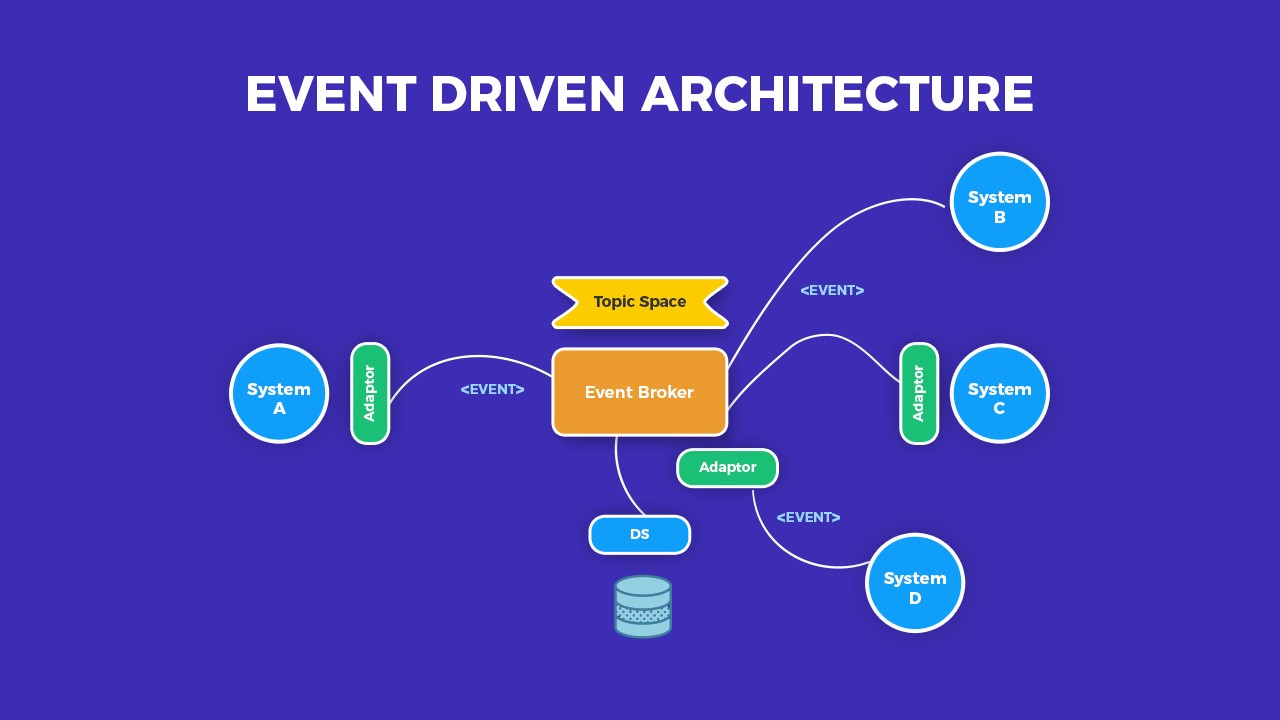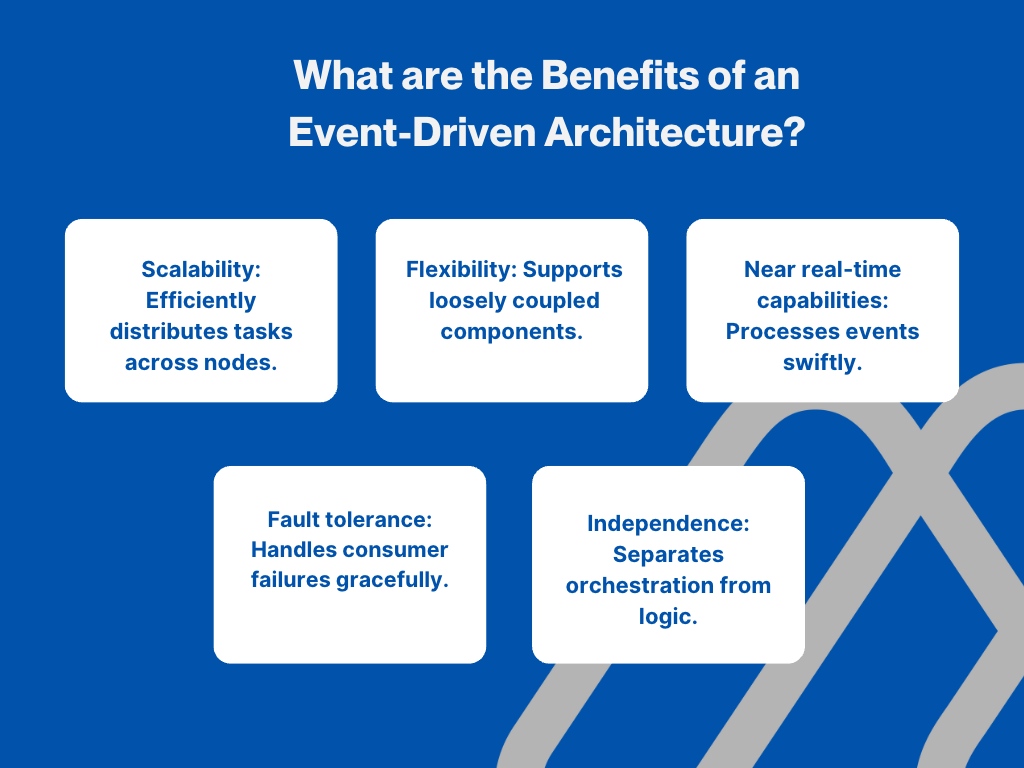Event-Driven Architecture: Rethinking Data Flows
Event-Driven Architecture: Rethinking Data Flows

1. Understanding Event-Driven Architecture
Event-driven architecture is a design pattern that focuses on the production, detection, and consumption of events. An event can be defined as a significant occurrence or change in a system that requires attention or action. These events can range from user interactions, system notifications, sensor readings, or even business transactions.
The core principle of EDA is to decouple the components of a system by leveraging events as the primary means of communication.
2. How EDA Changes Data Flows
Traditionally, in a request-response architecture, data flows in a linear fashion, where a client sends a request to a server, and the server responds with the requested data.
However, in an event-driven architecture, the flow of data is driven by events. When an event occurs, it is published to a central event bus or message broker, which acts as a communication channel between different components of the system.
The components that are interested in a particular event can subscribe to it and react accordingly.
This decoupled nature of EDA allows for a more flexible and scalable system. Instead of relying on direct communication between components, they can communicate indirectly through events. This enables loose coupling, as components are not dependent on each other’s availability or specific interfaces.
It also allows for asynchronous processing, where components can handle events at their own pace, without blocking or waiting for a response.
3. Benefits of Event-Driven Architecture

Implementing event-driven architecture offers several benefits for businesses:
-
Scalability and Flexibility
-
EDA enables horizontal scalability, as components can be added or removed without affecting the overall system. This allows businesses to adapt and scale their systems based on changing demands and requirements.
-
Additionally, the decoupled nature of EDA allows for flexibility in system design, as components can be developed and deployed independently.
-
-
Real-Time Responsiveness
-
By leveraging events, EDA enables real-time responsiveness to changes and events in the system. Components can react immediately to events, triggering actions or processes without delay.
-
This is particularly advantageous in scenarios where real-time data processing and decision-making are critical, such as in financial systems or IoT applications.
-
-
Fault Tolerance and Resilience
-
In an event-driven architecture, components are designed to be resilient to failures. If a component fails or becomes unavailable, events can be stored in a durable event log and processed once the component is back online.
-
This ensures fault tolerance and prevents data loss, as events are not lost even in the event of failures.
-
-
Loose Coupling and Modularity
-
EDA promotes loose coupling between components, allowing them to be developed and maintained independently.
-
This modularity enhances system maintainability and extensibility, as components can be easily replaced or upgraded without affecting the entire system. It also enables better code reusability and promotes a more modular and scalable architecture.
-
4. Impact on Data Processing and Storage
Event-driven architecture has a significant impact on data processing and storage. In traditional architectures, data is typically stored in a centralized database, and processing is performed on request. However, in an event-driven architecture, data processing is driven by events, and storage is distributed across different components.
-
Distributed Data Processing
-
In an EDA, each component can process events independently, based on its specific requirements. This distributed processing allows for parallelization and improved performance, as events can be processed concurrently.
-
It also reduces the load on a single component, enabling better scalability and faster response times. Over 70% of companies adopting EDA report improved processing speeds.
-
-
Event Sourcing and CQRS
-
Event sourcing is a technique often used in event-driven architectures, where the state of a system is derived from a sequence of events. Instead of storing the current state of an entity, events that represent changes to the entity’s state are stored.
-
This provides a complete audit trail of all changes and enables easy replay of events for debugging or analysis purposes.
-
Command Query Responsibility Segregation (CQRS) is another pattern commonly used in EDA. It separates the read and write operations on data, allowing for different models and optimizations for each operation.
-
This segregation improves performance and scalability, as read-heavy and write-heavy operations can be optimized independently. Over 80% of companies using CQRS report improved read/write speeds.
-
5. Frequently Asked Questions
Q1: How does event-driven architecture differ from traditional request-response architectures?
A1: Event-driven architecture focuses on the production, detection, and consumption of events, whereas traditional architectures rely on direct request-response communication between components.
Q2: What are the advantages of using event-driven architecture?
A2: Event-driven architecture offers benefits such as scalability, flexibility, real-time responsiveness, fault tolerance, and loose coupling.
Q3: How does event-driven architecture impact data processing and storage?
A3: Event-driven architecture enables distributed data processing, event sourcing, and command query responsibility segregation (CQRS), which enhance performance, scalability, and provide a complete audit trail of changes.
Q4: Can event-driven architecture be used in any type of system?
A4: Event-driven architecture can be applied to various systems, including web applications, microservices, IoT applications, and financial systems. Over 90% of Fortune 500 companies use EDA in some capacity.
Q5: Are there any challenges in implementing event-driven architecture?
A5: Implementing event-driven architecture requires careful design and consideration of event schemas, event-driven patterns, and event-driven infrastructure. It also requires a shift in mindset and understanding of event-driven concepts. Proper training and change management is key.
Conclusion
Event-driven architecture has emerged as a powerful paradigm for designing scalable, flexible, and responsive systems. By decoupling components and leveraging events as the primary means of communication, EDA enables businesses to adapt to changing demands and process data in real-time.
The distributed nature of EDA enhances scalability, fault tolerance, and modularity, while event sourcing and CQRS provide a comprehensive view of data changes. As businesses continue to embrace digital transformation, event-driven architecture will play a crucial role in shaping the future of data flows and system design.
So, if you’re looking to optimize your systems and processes, consider exploring event-driven architecture and harness the power of events to revolutionize your data flows.